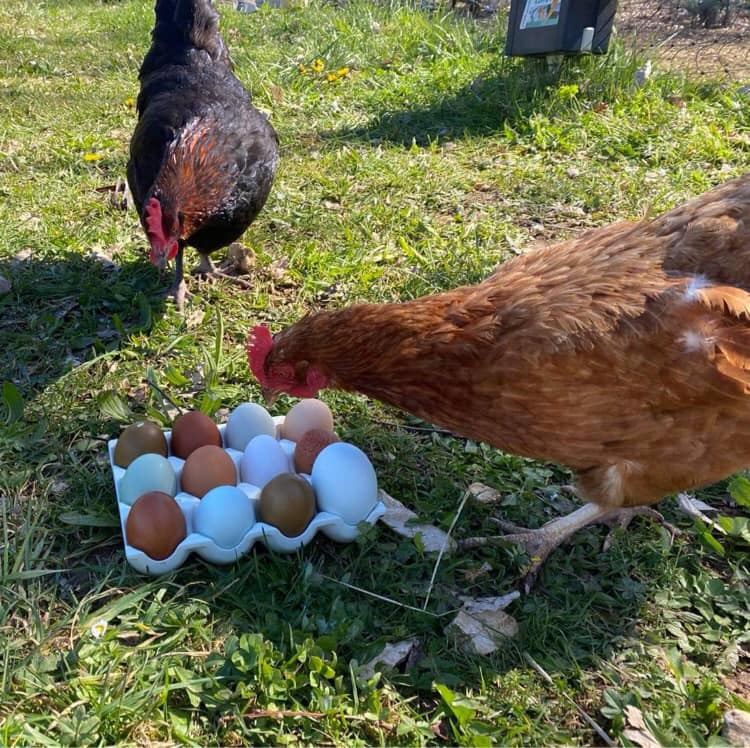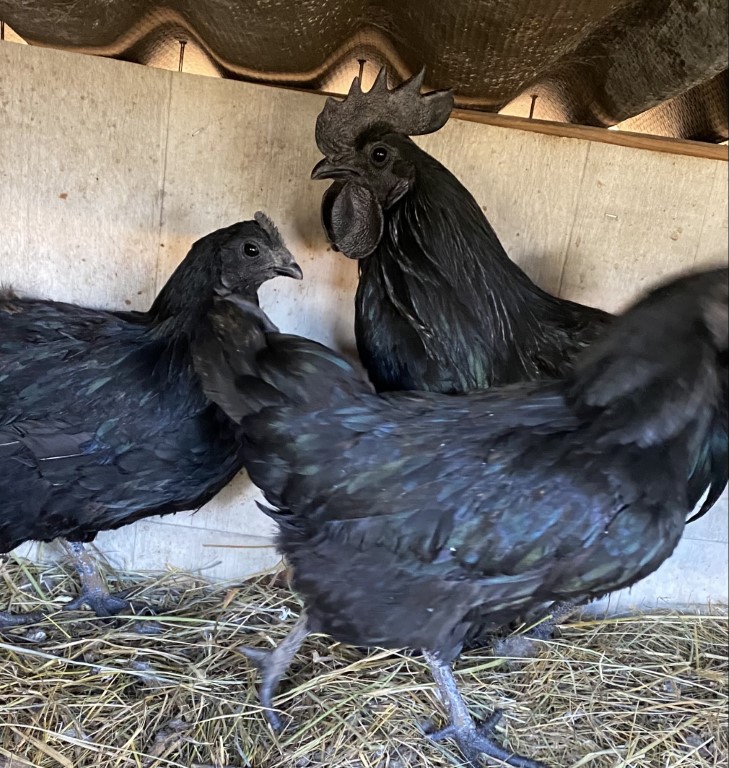
Breeding Chickens for Coloured Eggs
I’m often asked what I do to get my hens to lay all these beautiful, coloured eggs. Some think it is down to what they eat, but it’s even easier than that.
Breeding chickens for coloured eggs is lots of fun. The colour of a chicken’s egg is determined by its genetics, particularly by the breed. Here’s my basic guide on how to get coloured eggs.

Understanding Egg Colours
- White Eggs: This is the base colour for all eggs. If you scratch a brown egg, it will be white underneath. Crazy but true. Many varieties lay white eggs, including the glorious Ayam Cemani
 , which, despite their shiny black plumage, black tongue and internal organs, actually lay white eggs.
, which, despite their shiny black plumage, black tongue and internal organs, actually lay white eggs. - Brown Eggs: Brown eggs range in colour from dark chocolate to light brown. The red chickens are classic light brown layers, and these are the eggs you generally find in the supermarket. Marans tend to lay darker eggs, with some producing an intense chocolate brown. If you are aiming for coloured eggs, ideally, you’d want a Black Copper Maran cockerel.
- Blue Eggs: Breeds like Araucanas, Ameraucanas, Azur, and Cream Legbars are known for their beautiful blue eggs. These are the ones you want to have your coloured egg range.
- Green/Olive Eggs: Result from crossing a blue egg layer with a brown gene cockerel, such as a Black Copper Maran.
- Pink or Tinted Eggs: Certain breeds, like Light Sussex or Barnevelders, can produce eggs with a lovely pinkish tint.

So how do you get coloured eggs?
It’s easier than you might think.
Choose a rooster from one colour line and hens from another to create hybrids. For example, pairing a blue egg hen (like an Ameraucana) with a brown egg cockeral (such as a Maran) will produce olive coloured eggs.
Now with your olive egg-layer, you can breed it with a white gene cockerel to produce a light green egg, or a white cockerel with your blue layers, for a very light blue egg. Breed your Olive egg layer with a dark brown cockerel for a darker shade of green.
Useful Tips
- Make sure to isolate breeding groups to control parentage. It is crucial that you know what colour your cockerel is and make sure that another cockerel can’t enter the coop.
- If you want a variety of colored eggs but only have one cockerel, include a diverse range of colored egg-laying chickens in your group.
- If you are breeding for a single egg colour (such as green), keep only blue layers with a Black Copper Maran cockerel (dark brown gene)


Hopefully, with these insights, you’ll be well on your way to enjoying a super array of eggs from your henhouse!